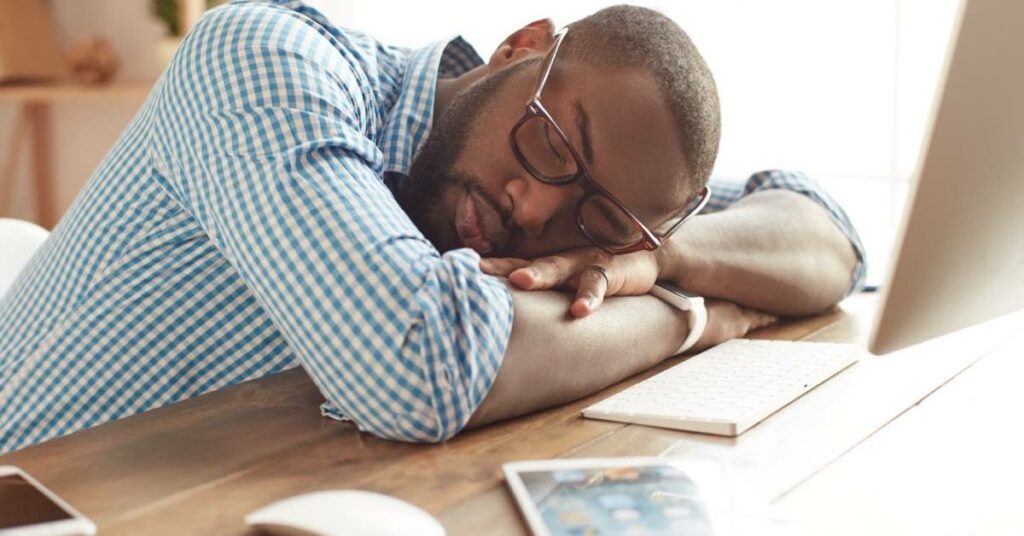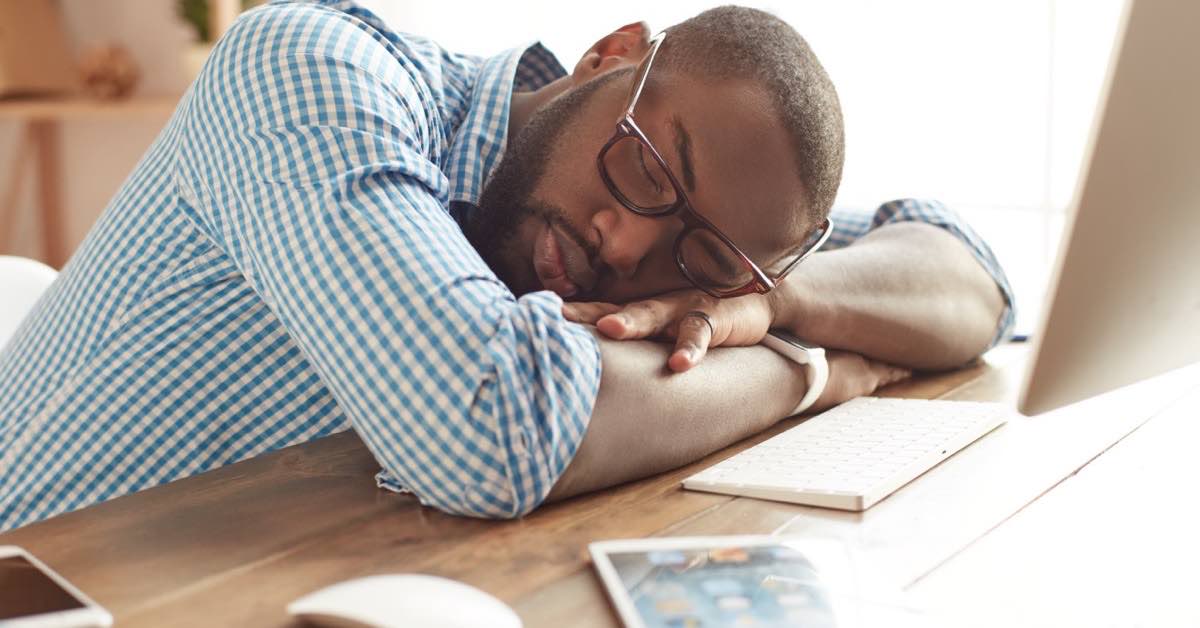No, a download won’t continue in sleep mode. The laptop tries to save power when entering sleep mode, so any downloads will stop until the computer wakes up.
However, this may be unhelpful because the server you are downloading from may have terminated the download connection. The remote server would need to support resuming downloads for you to do this. This feature can be hit and miss unless you know your downloading server.
For the laptop to continue downloading, you can prevent it from going into sleep mode. Your computer will usually go into sleep mode when you close the lid. The laptop might also enter sleep mode if it starts running low on power.
You must keep the system from falling asleep when you close the lid. If you want to download media on your laptop, it’s worth knowing how to keep your computer awake. The setting you need to make will depend on which version of your macOS. However, I’ll show you Monterey, the latest macOS version, at the time of writing.
How to prevent your Macbook from entering sleep mode
On a Macbook, the settings vary depending on the version of macOS you are running. On Monterey, you need to go to System Preferences > Battery and check the “Prevent your Mac from automatically sleeping when the display is off” option.
This way, when the display turns off, your laptop won’t go to sleep and stop your precious files from downloading!
For more info on your Mac’s sleep and wake settings, see the following Apple support page.
https://support.apple.com/en-au/guide/mac-help/mchle41a6ccd/mac

Mac in Sleep Mode Not Waking Up? Here’s How to Fix it
What is the Difference between Sleep and Hibernation Mode?
Sleep mode is a power-saving state that most computers enter when the user is inactive for some time. Computers in sleep mode are still on and can wake quickly.
Hibernation mode saves the computer’s current state to disk and shuts down, meaning that all information on the computer will be lost. Turning the computer back on, it uses this saved state to return to its previous working condition.
My Mac Won’t Wake up from Sleep Mode! What Can I Do?
The first thing to do is to ensure the Mac is plugged in and has a power cord connected. If not, it will not wake up from sleep mode.
With a plugged-in Mac, try resetting the Mac by holding down the power button for 5 seconds. If this does not work, you can also try restarting your Mac by pressing Command-Control-Power. If these steps don’t work, you should try resetting your Mac or restoring it from an earlier backup.
How to Prevent Your Mac from Sleeping Automatically
This section will provide you with a step-by-step guide on how to prevent your Mac from sleeping automatically.
Step 1: Open System Preferences and click on Energy Saver.
Step 2: Ensure the “Put hard disks to sleep when possible” is unchecked.
Step 3: Next, uncheck “Enable Power Nap”.
Step 4: Click OK to confirm your changes. And your Mac will no longer automatically sleep.
The Hidden Mac Sleep Mode Explained: How And When To Use It
We spend about a third of our lives sleeping. It is one of the most critical aspects of our health, as it helps us stay energized and alert during the day.
Sleep mode is a feature that can help you sleep better by making your device less distracting while you sleep.
Screen dimming and turning off are two features that can help you sleep better at night by reducing the blue light from your computer.
Different Types of Sleep Modes on Macs
The Mac has a few different sleep modes that you can use to conserve energy and help your battery last longer. The various sleep modes are:
- Sleep mode: This is the default setting for the Mac, and it’s the one we recommend using most of the time. It puts the computer into a low-power state, so it can start up quickly when you need to use it again.
- Power Nap: This mode is only available on newer Mac computers with flash storage. It puts your computer into a low-power state but then wakes up periodically to download email and other updates from Apple servers. You can set how often this happens (every 15 minutes or every 30 minutes). But this mode doesn’t work when plugged into the power.
How to Turn Off the Mac Sleep Mode Completely
The Mac Sleep Mode feature is helpful but may not be the best option for everyone. Some people might want to completely turn off the sleep mode to save some battery life.
If you need to disable sleep mode on your Mac, this article will show you how.
Step 1: Press the power button on your Mac and hold it for about 8-10 seconds until the power light flashes twice and then goes out. This action will force your computer into a low-power mode that doesn’t use any energy at all.
Step 2: When finished using your Mac, press the power button again and hold it for about 8-10 seconds until the power light flashes twice and then goes out. This action will put your computer back into its normal operating mode where it can use power.
This article might be useful: What Happens to Cancelled Downloads when Using a Web Browser?
How to Enable the Auto-Lock Feature for a Computer or Laptop?
Auto-Lock is a feature that enables the computer or laptop to lock itself after a set time. This feature can be helpful when you need to step away from your machine for a while.
To enable Auto-Lock on Windows, follow these steps:
- Open the Control Panel and then click on Power Options.
- Choose “Choose what the power buttons do” and click “Change settings that are currently unavailable”.
- Select “On battery” under “When plugged in, the computer goes into”, and then select “Never” under “When plugged in, the computer goes into”. Click OK to confirm these changes and exit the Control Panel window.
To enable Auto-Lock on Mac OSX, follow these steps:
- Open System Preferences and click on Security and Privacy
- Click General and then click Auto-lock
- Select ‘enable’ for “automatically lock after xx minutes.”
- Enter the number of minutes you want to set for the Auto-Lock.5) Click on the “Apply” button
Mac Sleep Mode Tips: How Does it Work, and What Are the Benefits
How Does Mac Sleep Mode Work?
Mac sleep mode is an operating system feature that automatically puts the computer to sleep after a set of times. It is a very convenient feature that saves energy and keeps your computer running at top performance.
The Mac sleep mode can be accessed in two ways: by using the keyboard shortcut command or clicking on the apple icon at the top left corner of the screen.
Understanding the Benefits of Mac Sleep Mode
Sleep mode on a Mac is one of the best features that Apple introduced in its computers. It allows the computer to enter standby mode, which reduces power consumption and extends battery life.
The most crucial benefit of sleep mode is that it saves energy and extends battery life. When you are not using your Mac, it goes into sleep mode, which means it uses less power and consumes less energy.
This feature is essential if you use your laptop often or have a desktop computer in your home office. The second benefit of sleep mode is that it makes your computer faster when you turn it back on.
When you turn off your Mac entirely and switch it back on again, there will be a short delay before the desktop appears on the screen because the computer needs to restart itself first.
However, when you put your Mac to sleep, it shuts down entirely and then wakes up in a few seconds. Sleep mode works: Once you instruct the computer to enter sleep mode, its processor will lower its clock speed and voltage.
The display screen will go black, energy usage will reduce by 80%, and the computer will pause the hard disk. All incoming data for the duration of sleep mode is blocked.
When Should You Use Mac Sleep Mode?
Sleep mode is a special mode on a Mac that saves power and extends battery life.
Apple introduced the sleep mode with the release of Mac OS X Lion in 2011. The feature design was to save battery life when a laptop is unplugged. The screen will turn off and stop processing, but it will still retain everything so you can quickly resume what you were doing after waking up your computer.
For laptop users, it’s best to use sleep mode when the laptop is unplugged and running off of battery power. This way, your computer won’t use more energy than necessary while away from an outlet.
When Should You Not Use Mac Sleep Mode?
Sleep mode is a power-saving feature that shuts down the computer when it is not in use. It is an excellent way to save energy and prolong the life of your computer. However, there are some situations when you should not turn on sleep mode.
We recommend that you do not activate sleep mode if you are running a program with a time limit or if you have set your computer to wake up at a specific time. If the program does not close properly, it will terminate after the system wakes up from sleep mode, which could cause data loss or other problems.

